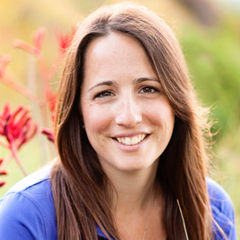Most skiers loathe the chairlift on a chilly day. The muscles get stiff and the body cools down quickly. Dynamic stretches are an excellent solution for this problem. Keeping the body moving strategically enhances performance and prevents injuries.
Skiing recruits hundreds of muscles. Practicing smaller, isolated movements is a type of corrective exercise, challenging specific muscle groups while simultaneously stretching others. It’s a great use of time while riding up the mountain! You can also practice these stretches before leaving the house, after the day is done or in the hot tub.
When skiing, many muscles are active, but the joints don’t always move through their full range of available motion. A dynamic stretch is a moving stretch, as opposed to a static stretch, which holds the joint in its end range position for a specified amount of time. In a dynamic stretch, specific muscles are contracting, while others are lengthening.
Guidelines for Dynamic Stretching
- If on the lift, utilize the safety bar, be aware of your position and always use caution.
- Move slowly through each motion with a 1- to 2-second pause at the end of the range of motion.
- Perform each stretch five to 10 times.
- Pay attention to how the movement feels on the right and left sides.
- These movements should feel good without overly fatiguing the muscles.
Health and fitness pros: If you’re teaching these exercises to clients, review the muscles indicated for each so they know what to feel and focus on. It’s a great opportunity to review anatomy with your clients.
Feet
Movement: ankle inversion and eversion
Turn the soles of the feet inward toward each other and outward away from each other. It will be a small amount of motion. Notice the muscles on the inside and outside of the ankle contracting and stretching.
These muscles are constantly active to stabilize the ankle while skiing. This movement allows the joint more range of motion than it can get when bearing the weight of the body.
Muscle Focus: peroneus longus, peroneus brevis, peroneus tertius, posterior tibialis, anterior tibialis
Ankles
Movement: dorsiflexion and plantar flexion
Point the tips of your skis and your toes up to the sky and then down to the ground. When you dorsiflex toward the sky, feel the muscles on the front of your shins contracting and the calf muscles stretching. The opposite sensation happens when you plantar flex toward the ground.
As you travel down the hill, the ankles have to plantar and dorsiflex to accommodate many other joint movements. This stretch creates more complete motion in the ankle joint than is possible when bearing the weight of the body.
Muscle Focus: anterior tibialis, extensor digitorum longus, extensor hallicus longus, gastrocnemius, soleus, flexor digitorum longus, flexor hallicus longus
Shoulders
Movement: scapula retraction and protraction
Press your shoulder blades together and into the back of the chair lift seat, making sure to keep your shoulders down and anchored. Try pressing your shoulders into the seat to feel an enhanced upper-back muscle contraction. Next, bring the shoulder blades around the rib cage, hunching them forward. Focus on your chest and upper-back muscles contracting and stretching.
This movement opens the chest and engages the upper-back muscles as well as the thoracic spine. It’s common to get tight from being hunched forward when skiing. Counteract the effect with this movement.
Muscle Focus: rhomboid minor, rhomboid major, middle trapezius, lower trapezius, latissimus dorsi, serratus anterior, pectoralis minor, pectoralis major
Spine
Movement: right and left spinal rotation
Rotate your torso right and left, turning the neck to look as far to the side as you can comfortably. Alternate back and forth. Take note of any major differences on one side compared to the other. This is something to address with a fitness or healthcare professional. It could potentially lead to injury.
The spine has a large range of motion that’s underutilized when skiing because it needs to stabilize and remain stiffened for optimal support. Practicing this movement stretches the many muscles and ligaments in the vertebral column to avoid soreness later on.
Muscle Focus: multifidus, semispinalis, rotatores, iliocostalis, longissimus, external obliques, internal obliques, quadratus lumborum, transverse abdominus, trapezius, scalenes, levator scapula
Knees
Movement: tibial internal and external rotation
Turn your skis like windshield wipers to the right and then to the left. This movement stretches the muscles that attach around the knee joint on all sides. The knees absorb a lot of stress while skiing, and this movement stretches those ligaments gently.
Do both skis travel the same range? Oftentimes, one side has more motion than the other. This is something to explore further with a fitness professional or physical therapist. Muscle imbalances can lead to injuries.
Muscle Focus: gastrocnemius, plantaris, popliteus, anterior tibialis, sartorius, gracilis
Follow your heart to a rewarding career in 2018 and save up to $300 on select study programs for a limited time.




 by
by 





